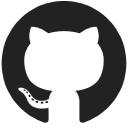How We Developed A $100K/Month Paid Memberships Plugin For WordPress
Hello! Who are you and what business did you start?
My name is Jason Coleman, and I am co-founder of Stranger Studios. Our flagship product is Paid Memberships Pro, a membership platform for WordPress. Associations use our platform to collect recurring payments and manage their memberships. Businesses and solo entrepreneurs use PMPro to run paid blogs, podcasts, and community sites.
Paid Memberships Pro is a free and open-source plugin available for download at WordPress.org. Over 100,000 sites run Paid Memberships Pro. We have around 6000 customers who pay us for premium add ons, support, and other services. In 2020, we averaged $100k per month in revenue and are on track to grow an additional 25-50% this year.

What's your backstory and how did you come up with the idea?
I've been in...

Download the report and join our email newsletter packed with business ideas and money-making opportunities, backed by real-life case studies.

Download the report and join our email newsletter packed with business ideas and money-making opportunities, backed by real-life case studies.

Download the report and join our email newsletter packed with business ideas and money-making opportunities, backed by real-life case studies.

Download the report and join our email newsletter packed with business ideas and money-making opportunities, backed by real-life case studies.

Download the report and join our email newsletter packed with business ideas and money-making opportunities, backed by real-life case studies.

Download the report and join our email newsletter packed with business ideas and money-making opportunities, backed by real-life case studies.

Download the report and join our email newsletter packed with business ideas and money-making opportunities, backed by real-life case studies.

Download the report and join our email newsletter packed with business ideas and money-making opportunities, backed by real-life case studies.

















